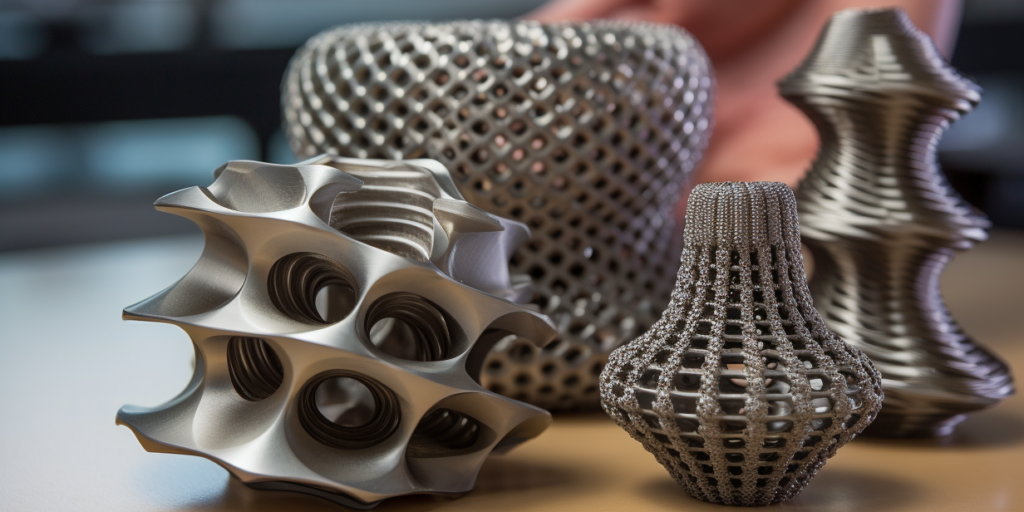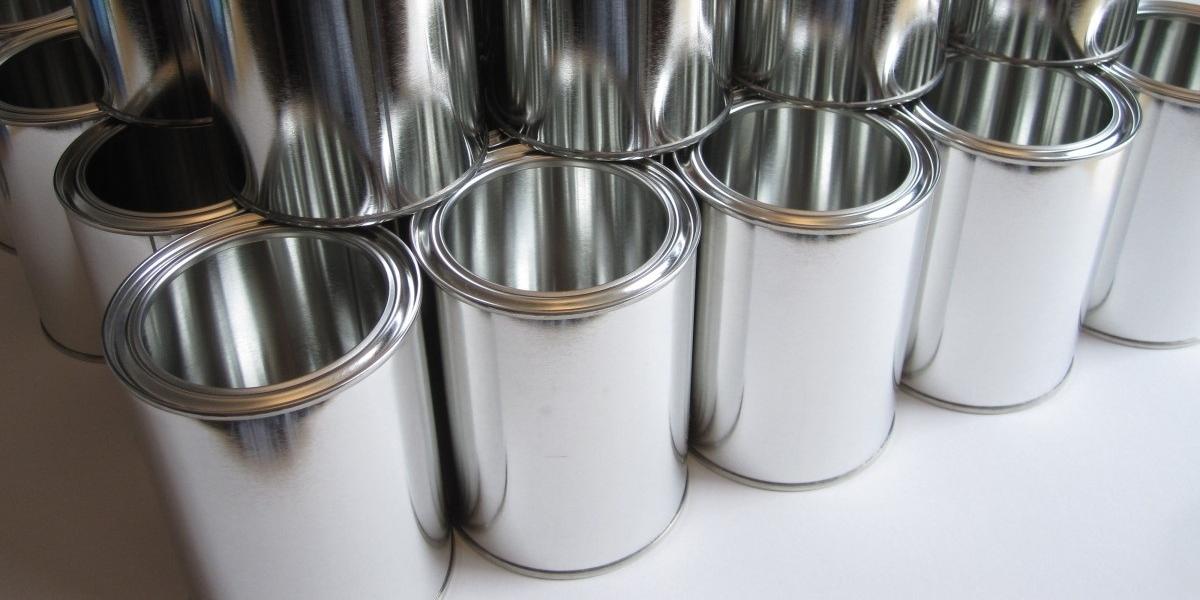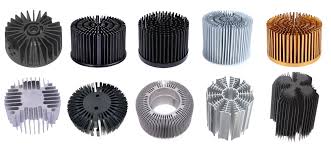
In today’s fast-paced technological landscape, the need for effective thermal management has never been more critical. Custom heat sinks serve as essential components in a variety of electronic devices, ensuring optimal heat dissipation and enhancing overall performance. This article delves into the intricacies of custom heat sink design and manufacturing, particularly focusing on aluminum solutions, and how they can be tailored to meet specific project needs.
What is a Custom Heat Sink and How Does It Work?
Understanding the Basics of Heat Sinks
A heat sink is a thermal management tool used to dissipate heat away from electronic components, such as processors and transistors, thereby preventing overheating and ensuring reliable operation. The basic function of a heat sink is to absorb the heat generated by a heat source and distribute it into the surrounding environment, which is crucial for maintaining optimal thermal performance. Custom heat sinks are designed specifically to fit the unique geometry of a device, allowing for enhanced cooling efficiency. They are often manufactured from materials with high thermal conductivity, such as aluminum or copper, to maximize heat dissipation capabilities.
How Custom Heat Sinks Improve Thermal Performance

Custom heat sinks significantly improve thermal performance by offering tailored solutions that standard models cannot. By customizing the dimensions, fin design, and mounting options, engineers can create heat sinks that match the specific thermal requirements of an application. This level of customization ensures that heat is effectively dissipated, reducing thermal resistance and allowing electronic components to operate at their optimal temperatures. The right custom heat sink can lead to improved performance and longevity of electronic devices, making it an indispensable part of thermal management strategies.
The Role of Extrusion in Custom Heat Sink Manufacturing
Extrusion is a manufacturing process that plays a pivotal role in producing custom heat sinks, particularly those made from aluminum alloys. Through this process, aluminum is forced through a die to create extruded heat sinks with precise dimensions and complex geometries. This method allows for the efficient production of heat sinks with a high surface area, which is essential for maximizing airflow and enhancing cooling performance. The ability to extrude aluminum into various shapes and thicknesses enables manufacturers to create custom designs that cater to specific thermal management needs, ensuring effective heat dissipation for a wide range of applications.
How to Choose the Right Custom Heat Sink for Your Project?
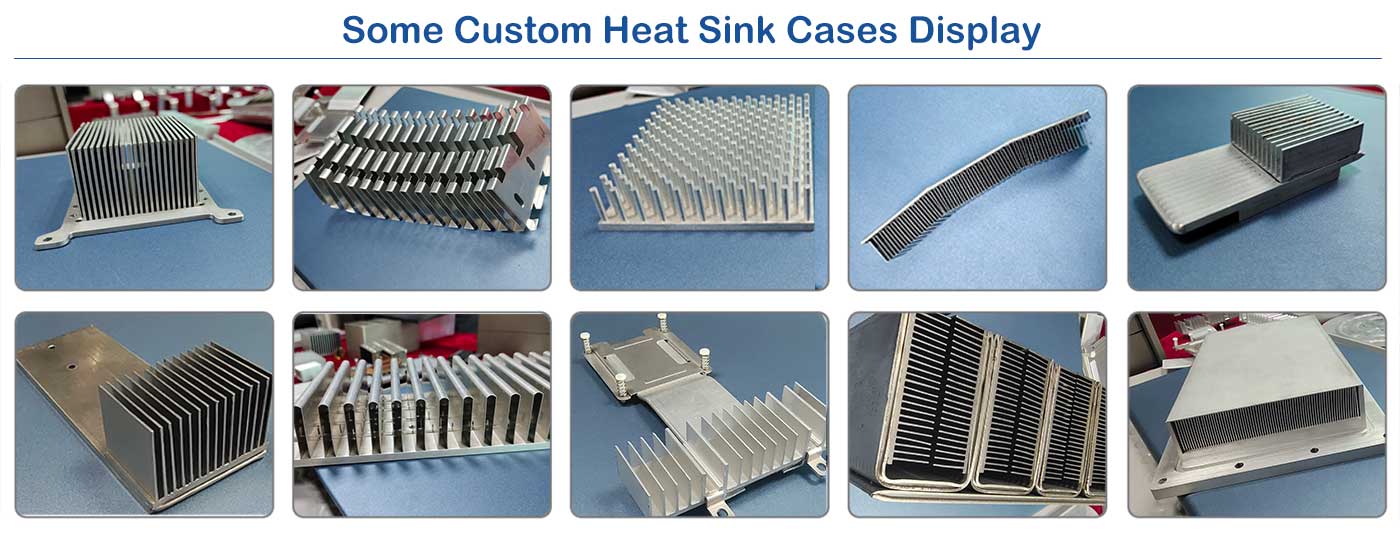
Factors to Consider for Effective Thermal Management
When selecting a custom heat sink for a project, several factors must be considered to ensure effective thermal management. First and foremost is the heat source’s thermal output; understanding how much heat needs to be dissipated is crucial for determining the size and design of the heat sink. Additionally, the operating environment, including factors like airflow and ambient temperature, can influence the heat sink’s effectiveness. The mounting options, such as push pins or thermal adhesive, also play a role in ensuring the heat sink is securely attached to the electronic component, which is vital for optimal heat transfer.
Understanding the Importance of Thermal Conductivity
Thermal conductivity is a critical property when selecting materials for custom heat sinks. Aluminum is favored for its excellent thermal conductivity, allowing for efficient heat transfer from heat sources to the sink and subsequently into the surrounding environment. The choice between aluminum and copper often depends on the specific application requirements, as copper offers superior thermal conductivity but is heavier and more expensive. By understanding the thermal conductivity of different materials, engineers can make informed decisions that enhance the overall thermal performance of the electronic devices they are designing.
Customization Options for Different Applications
Customization options for heat sinks are vast and can be tailored to fit different applications. Factors such as fin style, heat sink height, and thickness can be adjusted to optimize airflow and cooling efficiency. For instance, a thick fin design may provide more surface area for heat dissipation, while a taller heat sink can enhance natural convection. Additionally, anodized aluminum heat sinks offer improved corrosion resistance and aesthetics, making them ideal for consumer electronics where appearance is also a consideration. By working closely with engineers during the design and manufacturing process, clients can ensure that their custom heat sinks meet their unique thermal management needs.
What are the Benefits of Using Aluminum for Custom Heat Sinks?
Advantages of Aluminum in Heat Sink Design
Aluminum is the material of choice for many custom heat sink designs due to its lightweight nature, excellent thermal conductivity, and resistance to corrosion. These properties make aluminum heat sinks effective and durable, suitable for a variety of environments. The versatility of aluminum allows for intricate designs, including various fin geometries that enhance heat dissipation. Furthermore, aluminum is cost-effective compared to other materials, making it an attractive option for large-scale manufacturing of custom heat sinks.
Comparing Aluminum to Other Materials
While copper is known for its superior thermal conductivity, aluminum has several advantages that make it preferable for many applications. Aluminum’s lightweight nature reduces the overall weight of electronic devices, which is particularly important in portable electronics. Additionally, aluminum’s resistance to oxidation eliminates the need for additional coatings in many cases. When comparing thermal performance, aluminum can often meet the required specifications at a lower cost, making it a practical choice for custom heat sinks in various industries.
How Aluminum Extrusion Enhances Reliability
Aluminum extrusion enhances the reliability of custom heat sinks by allowing for consistent and precise manufacturing processes. Extruded heat sinks can be produced with uniform thickness and geometry, ensuring that each unit performs to the same high standards. This reliability is critical in industries where thermal management is paramount, such as in aerospace and medical devices. The robustness of aluminum extrusions means that custom heat sinks can withstand the rigors of various operational environments while maintaining their thermal performance over time.
How Does the Customization Process Work for Heat Sinks?
Steps in Designing and Customizing Your Heat Sink
The customization process for heat sinks typically begins with an assessment of the thermal requirements of the project. Engineers will collaborate with clients to gather data on the heat output, environmental conditions, and specific design constraints. From there, computer-aided design (CAD) software is often used to create detailed models of the proposed heat sink. Prototypes may then be produced to test the thermal performance before finalizing the design for manufacturing. This iterative process ensures that the final product meets all specified requirements, providing an effective cooling solution.
The Role of Engineers in Custom Heat Sink Manufacturing
Engineers play a crucial role in the design and manufacturing of custom heat sinks. Their expertise in thermal management, materials science, and manufacturing processes allows them to create solutions that meet specific project needs. They are responsible for analyzing thermal data, optimizing designs for airflow and heat dissipation, and ensuring that the final product adheres to industry standards. By leveraging their knowledge and experience, engineers can help clients achieve effective thermal management solutions that enhance the performance of electronic devices.
Rapid Prototyping: Speeding Up the Customization Process
Rapid prototyping has revolutionized the customization process for heat sinks by allowing for quick iterations and testing of designs. Utilizing advanced manufacturing techniques, such as 3D printing and CNC machining, engineers can create prototypes in a fraction of the time it traditionally takes. This speed enables clients to evaluate the thermal performance of their designs early in the development process, allowing for adjustments and improvements before full-scale production. Rapid prototyping not only enhances efficiency but also reduces costs and time-to-market for custom heat sink solutions.
What Are Common Applications of Custom Heat Sinks?
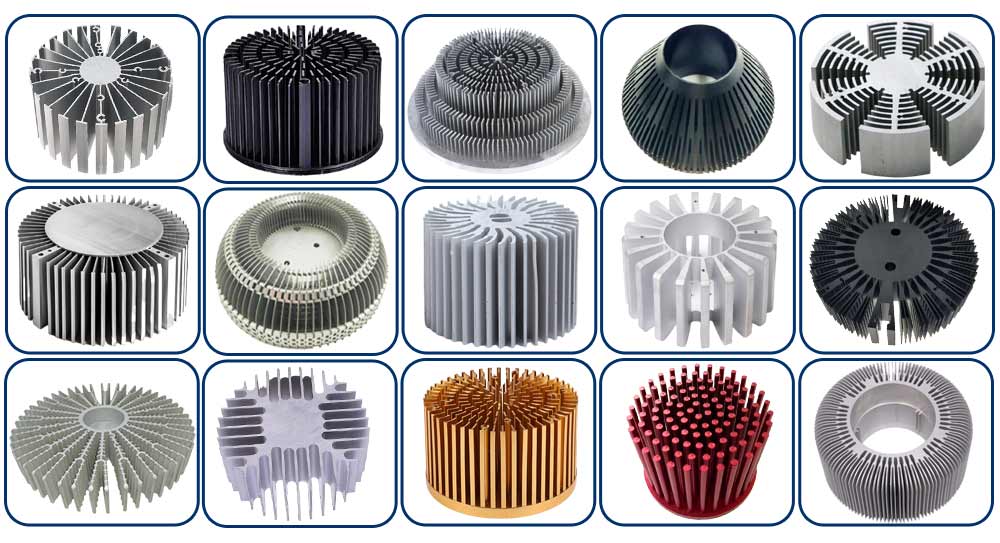
Industries That Benefit from Custom Heat Sinks
Custom heat sinks find applications across numerous industries, each requiring effective thermal management solutions. The electronics industry is perhaps the most significant user, with custom heatsinks being essential for cooling processors in computers, servers, and gaming consoles. Other industries, such as automotive, aerospace, and telecommunications, also rely on custom heat sinks to ensure that their electronic components operate within safe thermal limits. In these sectors, the ability to customize heat sinks to fit specific design requirements can greatly enhance product performance and reliability.
Examples of Electronic Devices Utilizing Custom Heat Sinks
Many electronic devices utilize custom heat sinks to maintain optimal operating temperatures. For instance, high-performance GPUs in gaming computers often require specialized heat sinks with intricate fin designs to manage the substantial heat generated during operation. Similarly, LED lighting systems benefit from custom heat sinks that facilitate effective heat dissipation, prolonging the lifespan of the LEDs. Other examples include power amplifiers, RF transmitters, and high-density circuits, all of which rely on effective thermal management solutions to ensure reliability and performance.
How Custom Heat Sinks Enhance Cooling in Complex Systems
In complex systems, such as data centers and telecommunications networks, custom heat sinks play a vital role in enhancing cooling efficiency. These systems often house multiple components that generate significant heat, necessitating advanced thermal management strategies. Custom heat sinks can be designed to optimize airflow and improve heat dissipation in tightly packed enclosures. By integrating custom solutions, engineers can ensure that even the most heat-sensitive components remain within safe operating temperatures, thereby enhancing the overall reliability and efficiency of the system.
XMAKE as a CNC Machining Supplier
XMAKE is a leading supplier of CNC machining services, known for its high-quality and precision-engineered parts. Here are some of the key advantages of choosing XMAKE for your CNC machining needs:
- Advanced Technology: XMAKE uses state-of-the-art CNC machines that ensure high precision and consistency in every part produced.
- Experienced Team: With a team of experienced engineers and machinists, XMAKE can handle complex projects and provide expert advice on material selection and design optimization.
- Quality Assurance: XMAKE has a rigorous quality control process that ensures every part meets the highest standards of quality and reliability.
- Customization: XMAKE offers customized CNC machining solutions tailored to meet the specific needs of your application.
- Fast Turnaround: XMAKE is committed to delivering parts on time, helping you keep your projects on schedule.
Conclusion
Proper electric motor mounting is a critical aspect of ensuring the efficient and reliable operation of industrial equipment. By understanding the different types of motor mounts and following best practices for alignment, vibration isolation, and secure mounting, you can significantly enhance the performance and lifespan of your electric motors.
Additionally, utilizing high-quality CNC machined motor mounts from a reputable supplier like XMAKE can provide the precision and durability needed for demanding industrial applications.
Investing time and resources into proper motor mounting not only prevents costly downtime but also contributes to the overall efficiency and productivity of your industrial operations. By following the guidelines outlined in this comprehensive guide, you can ensure that your electric motors are mounted correctly and perform optimally for years to come.
Read More: Comprehensive Guide to 5 axis cnc machining in 2025 | XMAKE
FAQS
1. Why is aluminum the preferred material for custom heat sinks?
Aluminum is widely used due to its excellent thermal conductivity, lightweight nature, corrosion resistance, and cost-effectiveness. These properties make it ideal for dissipating heat efficiently while maintaining structural integrity. For instance, extruded aluminum heat sinks offer high surface area for airflow and can be tailored to complex geometries, enhancing cooling performance.
2. How does the customization process for heat sinks ensure optimal performance?
The customization process involves collaborative design with engineers to assess thermal requirements, create CAD models, and prototype testing. Factors like fin geometry, heat sink height, and mounting options are optimized to maximize heat dissipation. Rapid prototyping techniques (e.g., 3D printing) allow for iterative improvements before mass production.
3. What industries benefit most from custom heat sinks?
Industries such as electronics (e.g., CPUs, GPUs), automotive (e.g., electric vehicle components), aerospace (e.g., avionics), and telecommunications rely heavily on custom heat sinks. These sectors require precise thermal management to ensure component reliability in high-stress environments.
Reference
1. Aluminum is the material of choice for many custom heat sink designs due to its lightweight nature, excellent thermal conductivity, and resistance to corrosion… aluminum is cost-effective compared to other materials



